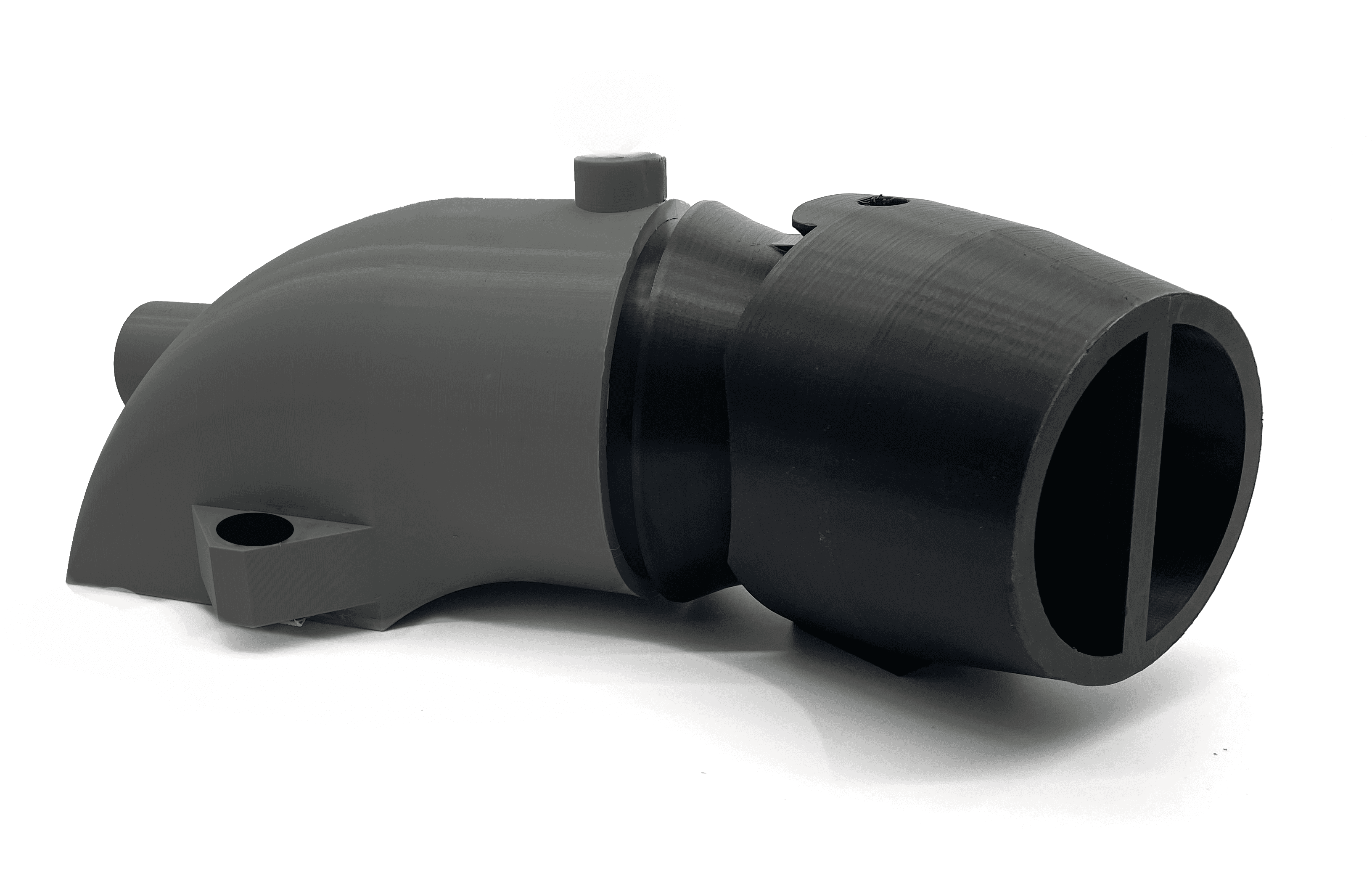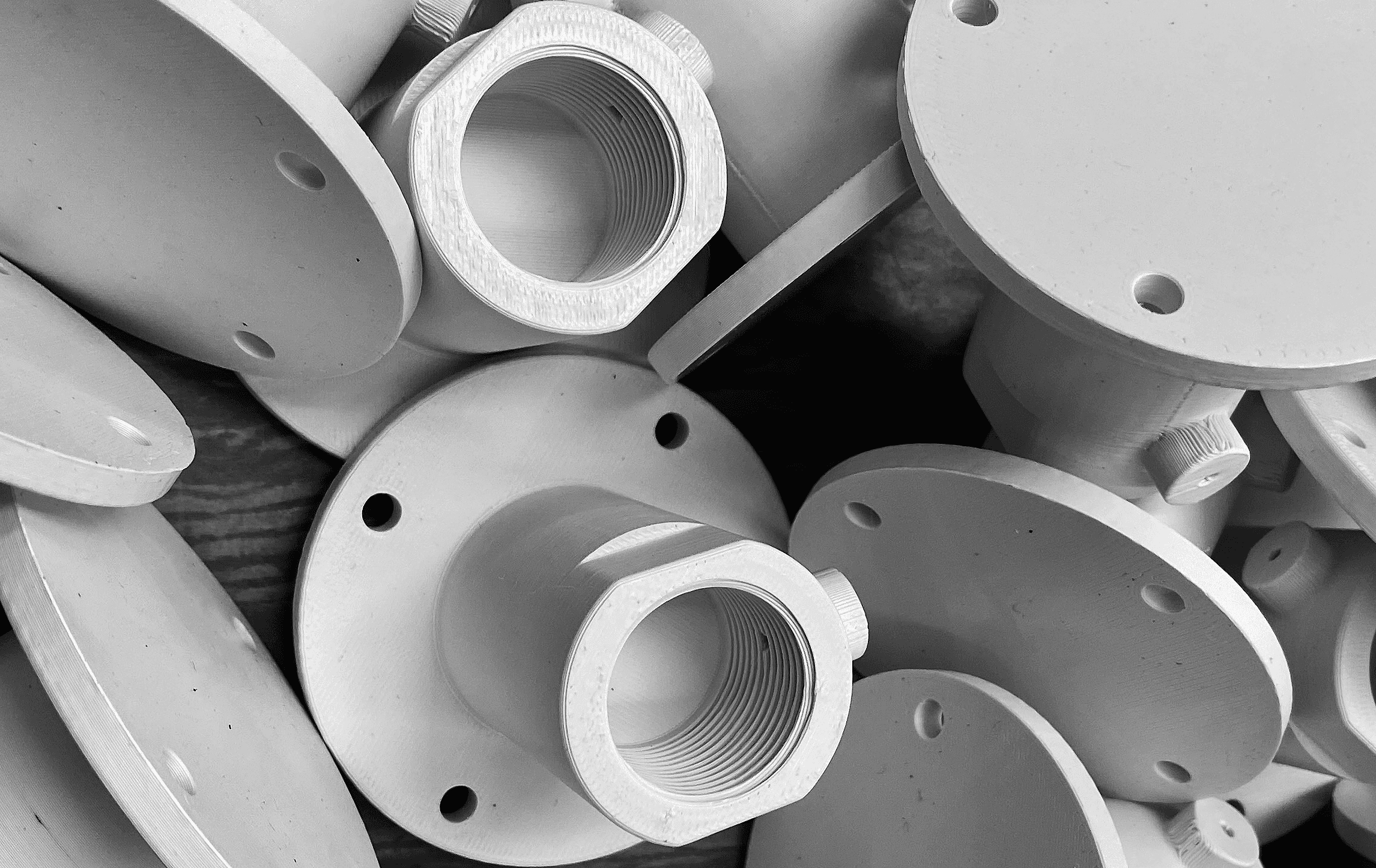

PETG
Technology:
PETG is a great alternative to ABS for strong, robust, end-use parts.

Popular

Great Value

Great for Bulk Orders
If PLA does not offer the mechanical properties needed for your application, then PETG is the next step up, and our second most cost-effective option. Consider PETG for bulk orders and production runs. This engineering grade material runs beautifully across our entire print farm.
Ideal Size ≤
600 x 600 x 600 mm
(24 x 24 x 24 in)
Resolution
0.16 - 0.4 mm
Colors
White
Black
Grey
Red
Blue
Clear
Orange
Pink
Green
Teal
Purple
Economical
Max Size
Flexibility
Strength
Heat Resistance
Economical
Label
Max Size
Label
Flexibility
Label
Strength
Label
Heat Resistance
Label
functional

Comparable properties to ABS without the risk of warping.
functional

Comparable properties to ABS without the risk of warping.
functional

Comparable properties to ABS without the risk of warping.
limitless complexity

Take full advantage of the design freedom 3D printing offers.
limitless complexity

Take full advantage of the design freedom 3D printing offers.
limitless complexity

Take full advantage of the design freedom 3D printing offers.
translucent options

While not fully transparent, tranlucency can be achieved.
translucent options

While not fully transparent, tranlucency can be achieved.
translucent options

While not fully transparent, tranlucency can be achieved.
Compare with other
FDM
materials
Material
Economical
Max Size
Flexibility
Strength
Heat Resistance
Specifications
Mechanical Properties
(XY) Tensile Modulus
1472 ± 270 MPa
ISO 527, GB/T 1040
(XY) Tensile Modulus
1472 ± 270 MPa
ISO 527, GB/T 1040
(XY) Tensile Strength
31.9 ± 1.1 MPa
ISO 527, GB/T 1040
(XY) Tensile Strength
31.9 ± 1.1 MPa
ISO 527, GB/T 1040
(XY) Elongation at Break
6.8 ± 0.9 %
ISO 527, GB/T 1040
(XY) Elongation at Break
6.8 ± 0.9 %
ISO 527, GB/T 1040
(XY) Bending Modulus
1174 ± 64 MPa
ISO 178, GB/T 9341
(XY) Bending Modulus
1174 ± 64 MPa
ISO 178, GB/T 9341
(XY) Bending Strength
53.7 ± 2.4 MPa
ISO 178, GB/T 9341
(XY) Bending Strength
53.7 ± 2.4 MPa
ISO 178, GB/T 9341
(XY) Charpy Impact Strength
5.1 ± 0.3 kJ/m2
ISO 179, GB/T 1043
(XY) Charpy Impact Strength
5.1 ± 0.3 kJ/m2
ISO 179, GB/T 1043
Thermal Properties
Glass Transition Temperature
81 °C
DSC 10°C/min
Glass Transition Temperature
81 °C
DSC 10°C/min
Vicat Softening Temperature
84 °C
ISO 306, GB/T 1633
Vicat Softening Temperature
84 °C
ISO 306, GB/T 1633
Heat Deflection Temperature (1.8MPa)
74.8 °C
ISO 75, 1.8MPa
Heat Deflection Temperature (1.8MPa)
74.8 °C
ISO 75, 1.8MPa
Heat Deflection Temperature (0.45MPa)
78.4 °C
ISO 75, 0.45MPa
Heat Deflection Temperature (0.45MPa)
78.4 °C
ISO 75, 0.45MPa
Chemical Resistance
Weak Acids
Not resistant
Weak Acids
Not resistant
Strong Acids
Not resistant
Strong Acids
Not resistant
Weak Alkalis
Not resistant
Weak Alkalis
Not resistant
Strong Alkalis
Not resistant
Strong Alkalis
Not resistant
Organic Solvent
Resistant most
Organic Solvent
Resistant most
Oils and Grease
No data available
Oils and Grease
No data available
Equilibrium Water Absorption
0.54%
Equilibrium Water Absorption
0.54%


Material Guide
What feature is most important for your parts?
Recommended Materials:
Material Guide
What feature is most important for your parts?
Material Guide
What feature is most important for your parts?

Capabilities
Explore
Applications
















